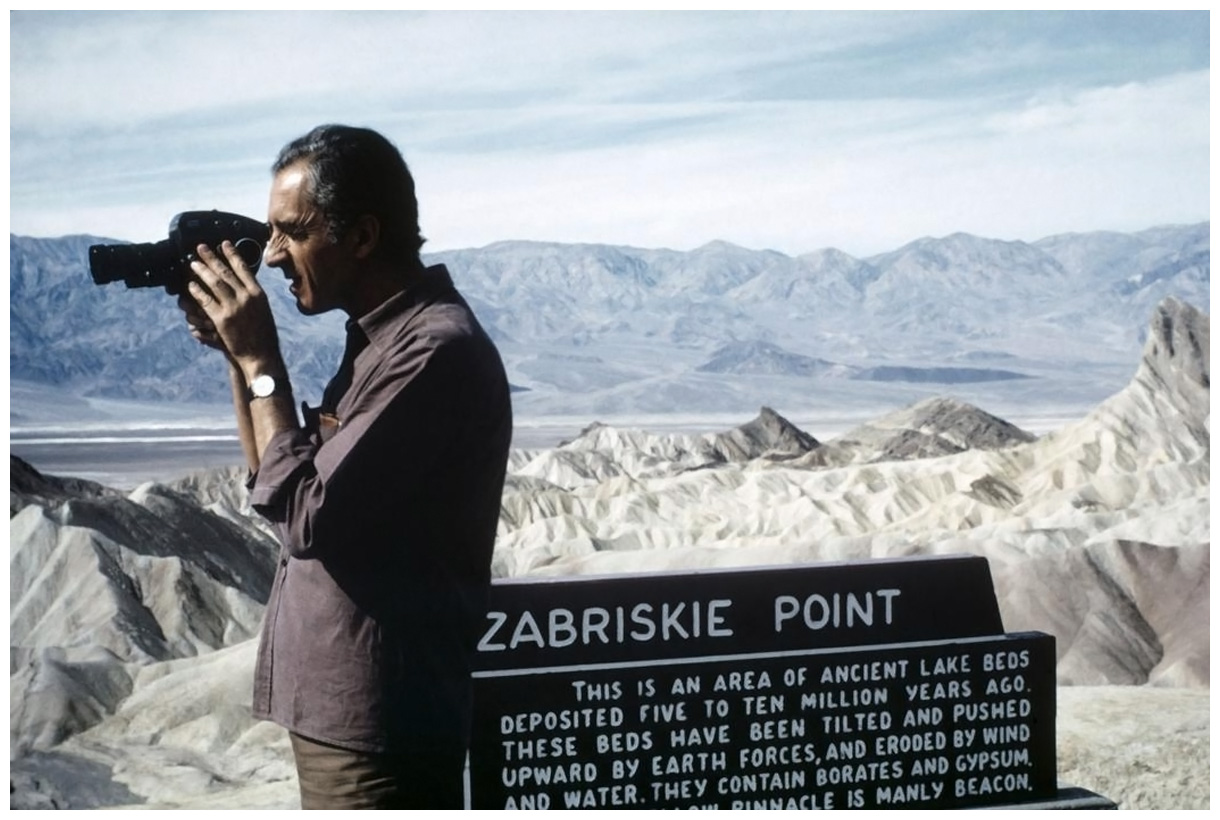
The stellar filmmaking career of Michelangelo Antonioni spanned over five decades and included fifteen features as well as various shorts and Chung Kuo, Cina (1972), a documentary on the Chinese working class.
Enamoured from a young age with drawing and the violin, Antonioni maintained a lifelong interest in music and visual art, which undoubtedly contributed in an invaluable way to the depth and integrity of his cinema. Although his parents gave him a comfortable upbringing they were both working class and his childhood was spent mostly in the company of poor children.
This sympathy and the subsequent social conscience it instilled in him was illustrated in many of Antonioni’s early films, which were mostly devised in a realist fashion. But although his greatness is apparent in these early films, most agree that Antonioni did not fully flourish as a director until his 1960 film L’Avventura, which asserted his independence from Italian Neorealism while redefining cinematic convention and boundaries. “I have need to express reality in terms which are not entirely realistic” Antonioni said, in conversation with Godard.
And indeed, somehow in these films steeped in distancing and artifice we have an Antonioni who is more profound and more universal. It is also a much more ambiguous cinema, which French director, screenwriter and Nouveau Roman author Alain Robbe-Grillet notes makes it a more relevant exploration of reality. This opening up of meaning one finds in Antonioni, rather than a closure of meaning one finds in American cinema, Robbe-Grillet asserts, is the great quality of modernity.
The following is a selection of not all, but the best and most representative works of this essential director.
1. Gente del Po (People of the Po Valley, 1943) and N. U. (Dustmen, 1948)
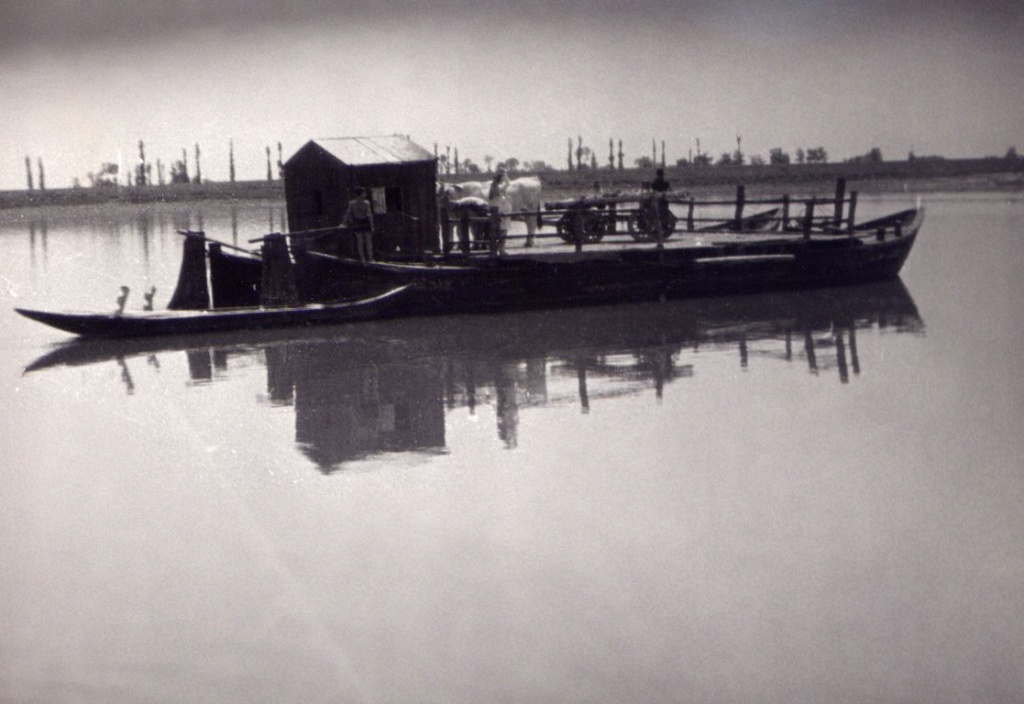
Gente del Po is an early short on people of the Po river’s barges and banks, shot in a faux-documentary style. Unfortunately due to the war its footage was not released until 1947, and much was lost. Similarly N. U. (Nettezza urbana – municipal cleaning service) is another realist short which depicts the daily life of impoverished streetsweepers in Rome.
Both these films are worth watching for their empathy and stunning cinematography. We can see here how Antonioni is beginning to understand the beauty of the industrial artefact or setting, exploiting them in provocative ways. Shot before what is recognized as the first wave of what are officially recognized as neorealist films, Antonioni himself referred to Gente del Po as “a prelude to Italian Neorealism”.
2. Cronaca di un amore (Story of a Love Affair, 1950)
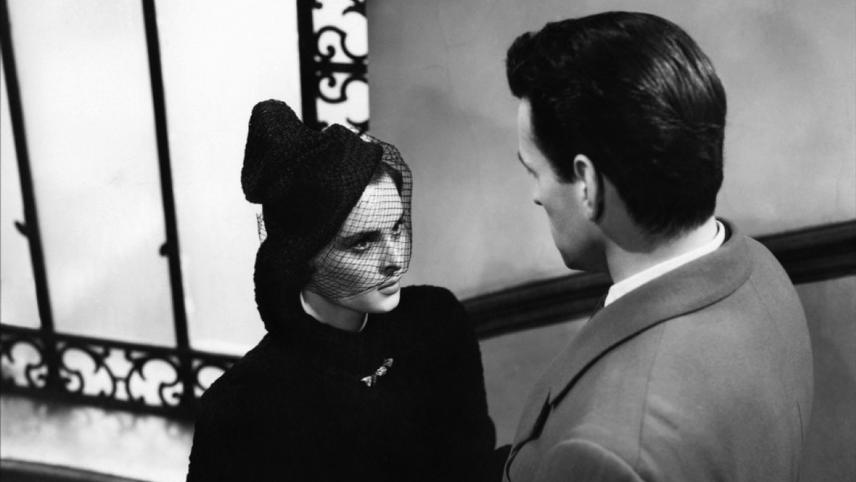
Paola (Lucia Bosè) is being investigated by her husband Enrico, (Ferdinando Sarmi) a wealthy fabric manufacturer. She discovers this one day when recontacted by old flame Guido (Massimo Girotti) after he appears one evening across the street when she’s exiting the opera with her husband. Paola and Guido resume their relationship and decide it might be best if they kill her husband.
A very admirable first feature, with a great award-winning score by Giovanni Fusco, who scored many of Antonioni’s films. It is in style and themes very noir, but it lacks the campy performances of many American noir films. There are also no extreme closeups but as Antonioni later said this was not his choice, but due to the nature of the lenses he was using at the time.
3. Il Grido (The Cry, 1957)

Il Grido tells the story of Aldo, who unexpectedly rejected by his lover Irma, begins a life of wandering from place to place with his daughter, desperate for work and living hand to mouth.
While Antonioni’s features before this are mostly stories of the middle class or privileged, in this film he returns to a realist style depicting working class struggles. But in Il Grido as in some of Antonioni’s early short works, we see industrial settings employed in enthralling ways. As well, we see here a character whose life is shaken by a major identity crisis, so important in Antonioni’s later films.
It is perhaps not a work striking as universal a chord as the great films of Italian neorealism such as Rossellini’s Paisan (1946) or De Sica’s Bicycle Thieves (1948). It is nonetheless a very admirable work and within bears the seeds of Antonioni’s later obsessions.
French philosopher Roland Barthes noted that the ambiguities inherent in Il Grido set it apart from other neorealist works. Aldo is not simply battered by poverty, but is an existential hero in search of his identity, and the film’s ending leaves one with no sense of closure, but simply multiplies its ambiguities.
4. L’Avventura (The Adventure, 1960)
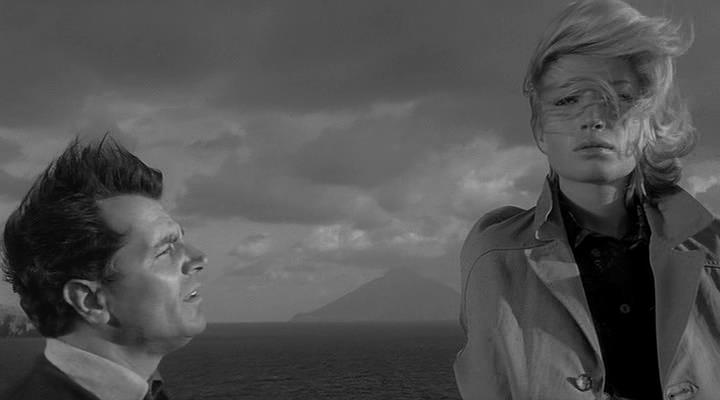
Anna (Lea Massari) and her friend Claudia (Monica Vitti) drive to her boyfriend Sandro’s (Gabriele Ferzetti) place to go on a boating trip. Anna is reluctant to go talk to Sandro but he yells hello from the window. They make love as Claudia waits outside. Sandro seems mocking towards Anna, speaking to her as though she is a child. He asks her how she is and she says awful. He asks why and she responds “Why, why, why, why, eh.”
They meet up with two other couples and sail by one of the Aeolian islands which Guilia says were once volcanoes. Patrizia, the yacht’s owner says – “Islands. I don’t get them. Surrounded by nothing but water… poor things” Swimming, Anna cries that there is a shark, but says she is fine once back on board. She laughs for no reason and asks Claudia to choose one of two shirts. Claudia chooses one and Anna tells her to keep it, but Claudia refuses. Anna tells Claudia that the shark sighting was a lie but that she doesn’t know why she said it.
They go onto one of the islands. Anna complains to Sandro but he tries to reassure her, telling her that they are getting married. She wants to talk, but he tells her that words simply create misunderstanding. Awhile later they are getting ready to leave and Anna is nowhere to be found. Sandro says that it is the kind of “typical Anna behaviour” that drives him mad. They search everywhere and can’t find her.
Some return to report Anna missing but Sandro, Corrado and Claudia stay behind. It becomes rainy and they spend the night in a shack. Claudia implies to Sandro that Anna is gone because he wasn’t sympathetic enough. Waking early and looking for something to wear, Claudia discovers that Anna left her shirt in her bag. She searches the island in Anna’s shirt. The terrain is vast, desolate and windswept due to its height. Claudia stumbles and Sandro grabs her wrist and hand, obviously attracted to her.
The extremely long takes of isolated figures as they despairingly search the island were unconventional for the time and a bit much for restless audiences. The film was booed at its premiere at Cannes and many other places, although it was awarded the Jury Prize at that year’s festival. It is the last of Antonioni’s films using a mostly diegetic score, by longtime collaborator Giovanni Fusco.
If Antonioni’s English language films and Red Desert (1964) are about crises of identity, the trilogy which begins with L’Avventura is more concerned with moral crises and power relations, but of course all of these films also explore the vacuity of modern life. The desolate island scenes are rather Bergmanesque, although Bergman panned all Antonioni films outside of Blowup and La Notte. (Incidentally, you might not know that both great directors died on the same day.)
Outside of the long takes, undoubtedly the failed morality of the characters also aggravated audiences. In a letter to Antonioni written shortly before his death, Roland Barthes said that “l’artiste s’étonne et admire, son regard peut être critique, mais il n’est pas accusateur: l’artiste n’est connaît pas le ressentiment.” The artist wonders and admires, his regard perhaps critical, but he is not accuser: the artist does not know resentment.
Of course this does not mean Antonioni’s work lacks moral relevance. Barthes was simply emphasizing how his portrayal of reality as is rather than as it should be was creating a new cinematic language and one which he felt, along with admirers such as Robbe-Grillet, to be a superior approach.
This film, while perhaps somewhat trying at times, can really be admired for its innovation in editing and its creation of a new existential cinema. L’Avventura is the first of five films Antonioni made with “muse” Monica Vitti.
5. La Notte (The Night, 1961)
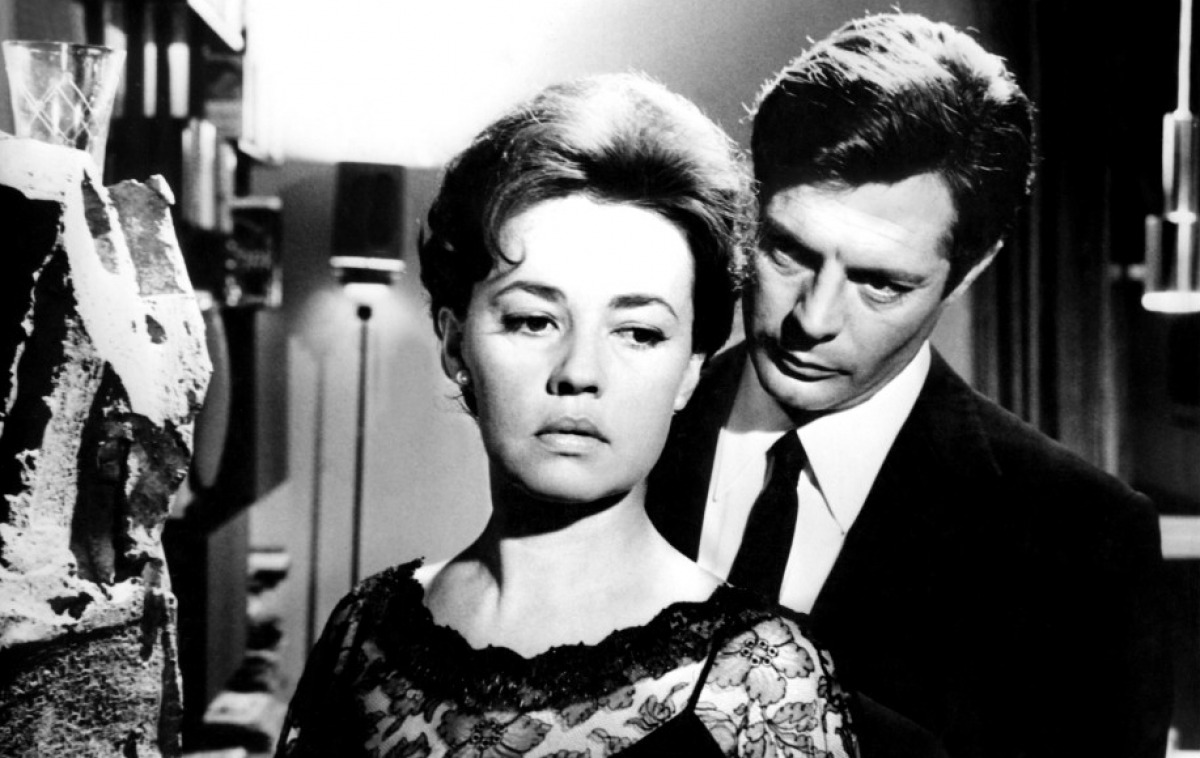
Giovanni (Marcello Mastroianni), a writer, and his wife Lidia (Jeanne Moreau) come to visit Tommaso (Bernhard Wicki) in hospital. Tommaso greets them warmly but jokes about death. Tommaso laments that he did not have the courage to examine things more deeply. He shows Giovanni that he is reading his book and says he hopes to finish it before he dies. “It must be the morphine. Do you really like the book?” Giovanni asks. Tommaso’s mother comes into the room, tired from traveling.
Although dying, Tommaso seems to think more about others than himself. He is suddenly visibly in pain, and Lidia says she has to leave. She has been quiet and uncomfortable during the visit. Tommaso tells his mother that these are his only real friends, and that Giovanni is a “famous writer”.
Later they go to Giovanni’s book launch, where Lidia stands off to the side, not interacting. She walks off and enters what looks like a more decayed area of the city. Giovanni is shown coming home. The building entrance is marble, with someone greeting him and giving him his mail, signs of privilege. The suite is very posh with marble floors and a maid.
Lidia finally calls Giovanni and asks if he will come to pick her up. He wonders why she is there, although it is revealed that they lived there many years ago when first married. Later they decide to go to a party. When Lidia puts on a stunning black dress and looks pleased with herself, Giovanni does not seem to have any interest in her. Her look of pleasure disintegrates into disappointment. She asks if they can skip the party and go elsewhere.
In a Felliniesque scene at a club, Lidia and Giovanni watch a half clad woman dance suggestively and do a contortionist act. Lidia smiles, telling Giovanni she finds him amusing sometimes, and that she feels he is putting up a front for her. She says that she is allowed her own thoughts and that she doesn’t like being belittled. They joke about when her “big thought” is coming while the dancer continues with her contortions.
A couple minutes later he asks her if her thought has come and if it is nice. She shakes her head. No, it is not. She asks where Gherardini’s party is and they determine to go. At the end of the act Giovanni says in a bored way that “Life would be tolerably agreeable if it were not for its amusements”. Lidia asks if this in an inspiration. “No” Giovanni says. He no longer has inspirations, he says, only recollections.
At the party it becomes clear that Gherardini is a dull, money-oriented man who as Lidia said earlier, “collects intellectuals” such as Giovanni. Although bored, it does not stop Giovanni from flattering his host and adapting marvellously into this setting. Lidia wanders around, obviously depressed, and witnesses her husband’s infidelity with the host’s daughter Valentina (Monica Vitti).
If L’Avventura vacillates between rugged natural landscapes and luxurious villas built in previous centuries, La Notte is a much colder and modern urban landscape, abounding in sharp corners, concrete and expanses of sneering glass. Mastroianni’s sterile appearance blends perfectly into this backdrop highlighting so well Giovanni’s misogyny and lack of regard for others. Like Monica Vitti, Mastroianni is the perfect “mannequin” type of actor, their stony faces provide so well a measure of distancing.
When Vitti smiles, it is like the archaic smile of antiquity, mysterious, yet impenetrable and artificial. The single sympathetic focus of the film is the character of Lidia, one of Jeanne Moreau’s greatest performances. The film’s conclusion reveals much about how our choices or how we are perceived by others shape us as much or more than our inherent worth. La Notte also illustrates so well how habit can take precedence over truth, and that intellect does not necessarily furnish one with happiness.